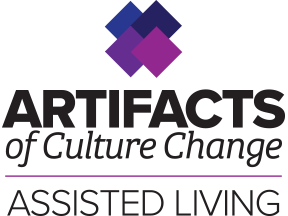 Protocol for Completion
Protocol for Completion
It is recommended that the assisted living community use a forum such as a task force/committee/team to complete the ACC – AL in order to gain the insights of residents, families and team members. The team should consist of the administrator/executive director, nursing/wellness coordinator and representatives from each department or team in the organization. In order to have complete representation of the assisted living, it is important that there be representatives from all levels of the organization and different shifts. It is recommended to include direct care team members, family members and residents. All those involved in the discussion should have a copy of the ACC – AL.
In order for a community to make any changes described in the ACC – AL, it is crucial for a high-level manager to lead these culture change efforts in order to provide support and necessary resources. To check progress in making changes over time, the assisted living may want to review the ACC – AL periodically, perhaps every six months or yearly. This becomes a way to assess progress, celebrate successes and revise goals and action plans, as necessary.
In addition to the team completing the ACC – AL together, some other options that organizations have used for completing the ACC – AL are: 1) a group of team members completes, a resident group completes, and then conclusions are made together; 2) one cross-section team completes, another cross-section team completes, and then conclusions are made together; 3) individuals complete the ACC – AL and then a discussion is convened of the whole team. The ACC – AL is designed to be completed for an entire assisted living community, rather than sections, special neighborhoods, or a single house/household.
To assess a community’s progress in implementing the ACC – AL, each practice should be marked in the appropriate implementation status: FULLY IMPLEMENTED, PARTIALLY IMPLEMENTED, or NOT A CURRENT PRACTICE. Examples of Fully and Partially Implemented are noted below:
FULLY IMPLEMENTED Examples
- All team members are aware of the practice and use it in their work.
- A policy is in place that explains the practice.
- All residents are aware of the practice and experience its occurrence regularly.
PARTIALLY IMPLEMENTED Examples
- The community is working on implementing the practice, but it is not fully implemented yet.
- Only certain sections of the community have the practice implemented.
- Policies have been written but not fully implemented yet.
If the team is questioning whether a practice is “fully” or “partially” implemented, a good best practice is to ask, “Can we do better?” If yes, the practice is likely partially implemented.
After consensus is reached on all items, the checkmarks in each column are added up and placed in the totaling grid at the end of the ACC – AL. Then, a percentage number is calculated for each column based on the guidance in the grid. (Refer to the example of a completed grid at the end of the ACC – AL.) This implementation percentage is intended to help organizations set goals as well as to assess progress over time.
Click below to:
> Begin the online self-assessment
> Download a PDF version of the self-assessment form and supplementary guidance
> Download a pdf version of a crosswalk from the “Outcomes” section included in the original Artifacts to an optional supplementary section of the ACC 2.0.

